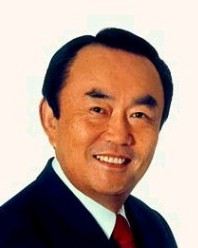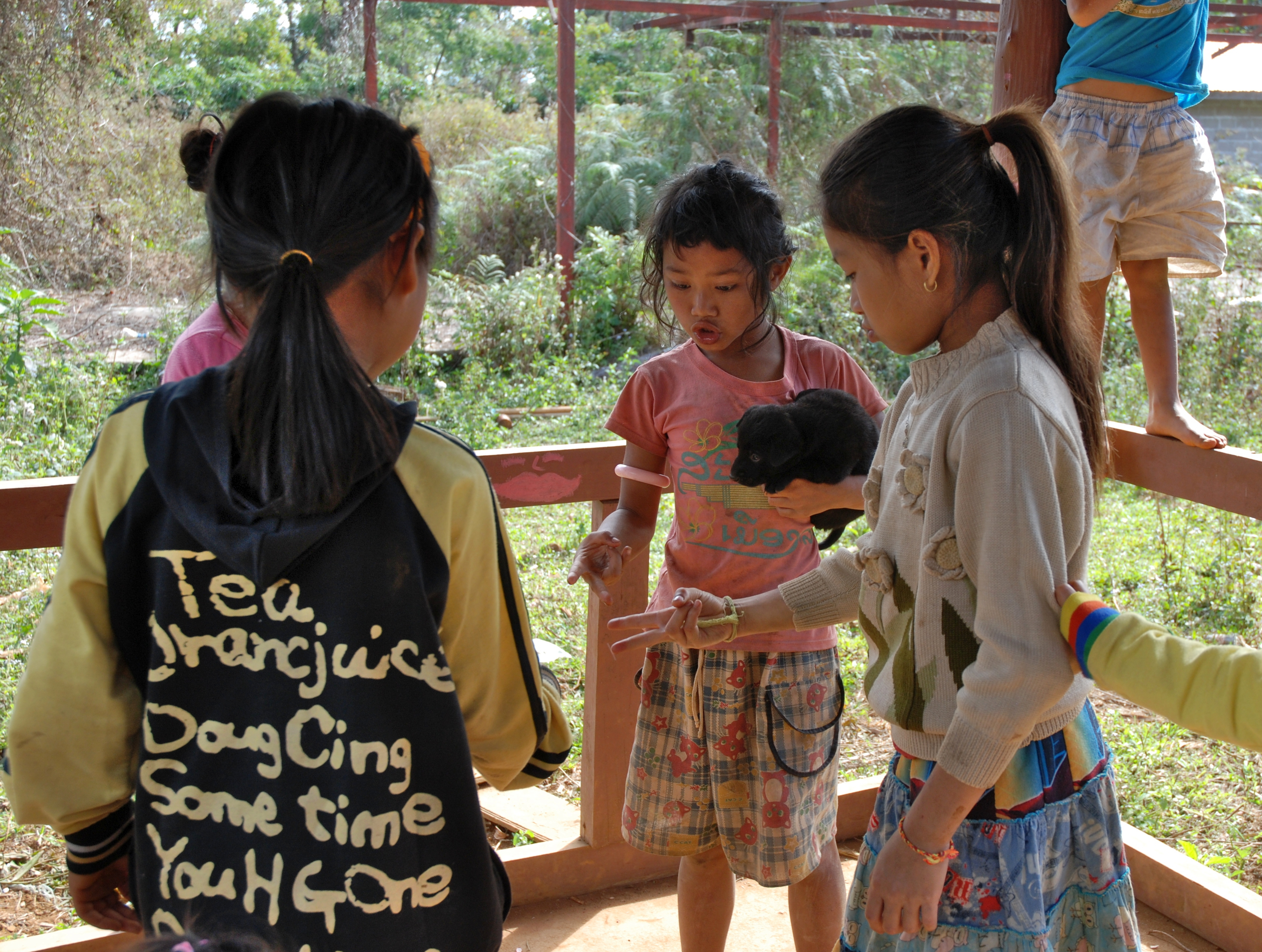|
Ken Saitō
is a member of the Liberal Democratic Party who served as the Minister of Economy, Trade and Industry from December 2023 to October 2024. Also serving in the Japanese House of Representatives, Saito served as the Minister of Justice from November 2022 to September 2023 and was the Minister of Agriculture, Forestry and Fisheries from August 2017 to October 2018. Early life and background Born in Shinjuku, Tokyo, his family ran a photography business. He attended Senior High School at Komaba, University of Tsukuba, and graduated from the Faculty of Economics at the University of Tokyo. In April 1983, he joined the Ministry of International Trade and Industry (now the Ministry of Economy, Trade and Industry) and was assigned to the Petroleum Distribution Division of the Agency for Natural Resources and Energy. He studied at Harvard University's Kennedy School and obtained a master's degree in 1991. In 1994, he played a central role in Japan-U.S. automobile negotiations. After se ... [...More Info...] [...Related Items...] OR: [Wikipedia] [Google] [Baidu] [Amazon] |
Minister Of Economy, Trade And Industry
The is a member of the Cabinet of Japan and is the leader and chief executive of the Ministry of Economy, Trade and Industry. The minister is also a statutory member of the National Security Council (Japan), National Security Council, and is nominated by the Prime Minister of Japan and is appointed by the Emperor of Japan. The current minister is Yoji Muto, who took office on 1 October 2024. List of ministers of economy, trade and industry (2001–) References [...More Info...] [...Related Items...] OR: [Wikipedia] [Google] [Baidu] [Amazon] |
Liberal Democratic Party (Japan)
The , frequently abbreviated to LDP, the Lib Dems, or , is a major conservativeThe Liberal Democratic Party is widely described as conservative: * * * * * and Japanese nationalism, nationalistSources describing the LDP as nationalist: * * * * * * A Weiss (31 May 2018). Towards a Beautiful Japan: Right-Wing Religious Nationalism in Japan's LDP. List of political parties in Japan, political party in Japan. Since its foundation in 1955, the LDP has been in power almost continuously—a period called the 1955 System—except from 1993 to 1996, and again from 2009 to 2012. The LDP was formed in 1955 as a merger of two conservative parties, the Liberal Party (Japan, 1950), Liberal Party and the Japan Democratic Party, and was initially led by Prime Minister of Japan, prime minister Ichirō Hatoyama. The LDP supported Japan's alliance with the United States and fostered close links between Japanese business and government, playing a major role in the country's Japanese eco ... [...More Info...] [...Related Items...] OR: [Wikipedia] [Google] [Baidu] [Amazon] |
Tsutomu Takebe
is a Japanese politician who served as secretary general of Japan's Liberal Democratic Party from 2004 to 2006. He was succeeded by Hidenao Nakagawa is a former Japanese politician of the Liberal Democratic Party, who served as a member of the House of Representatives of the Diet (parliament). Political career He served Yoshirō Mori is a Japanese politician who served as Prime Min .... References , - , - Politicians from Hokkaido Waseda University alumni 1941 births Living people Liberal Democratic Party (Japan) politicians Members of the House of Representatives (Japan) 2003–2005 Members of the House of Representatives (Japan) 2005–2009 Members of the House of Representatives (Japan) 2009–2012 {{japan-politician-1940s-stub ... [...More Info...] [...Related Items...] OR: [Wikipedia] [Google] [Baidu] [Amazon] |
Janken
Rock, Paper, Scissors (also known by several other names and word orders) is an intransitive hand game, usually played between two people, in which each player simultaneously forms one of three shapes with an outstretched hand. These shapes are "rock" (a closed fist: ✊), "paper" (a flat hand: ✋), and "scissors" (a fist with the index finger and middle finger extended, forming a V: ✌). The earliest form of "rock paper scissors"-style game originated in China and was subsequently imported into Japan, where it reached its modern standardized form, before being spread throughout the world in the early 20th century. A simultaneous, zero-sum game, it has three possible outcomes: a draw, a win, or a loss. A player who decides to play rock will beat another player who chooses scissors ("rock crushes scissors" or "breaks scissors" or sometimes "blunts scissors"), but will lose to one who has played paper ("paper covers rock"); a play of paper will lose to a play of scissors ("scis ... [...More Info...] [...Related Items...] OR: [Wikipedia] [Google] [Baidu] [Amazon] |
Kiyoshi Ueda
is a Japanese politician currently serving as a member of the House of Councillors for the Saitama at-large district after winning a by-election in 2019. He has signed the Taxpayer Protection Pledge, signaling his opposition to any and all tax increases. He previously served as governor of Saitama Prefecture is a Landlocked country, landlocked Prefectures of Japan, prefecture of Japan located in the Kantō region of Honshu. Saitama Prefecture has a population of 7,338,536 (January 1, 2020) and has a geographic area of 3,797 Square kilometre, km2 ( ... from 2003 to 2019, when he subsequently retired. References External links Official website 1948 births Living people People from Fukuoka Waseda University alumni Members of the House of Representatives (Japan) Japanese anti-communists Hosei University alumni Governors of Saitama Prefecture {{Japan-politician-1940s-stub ... [...More Info...] [...Related Items...] OR: [Wikipedia] [Google] [Baidu] [Amazon] |
Saitama Prefecture
is a Landlocked country, landlocked Prefectures of Japan, prefecture of Japan located in the Kantō region of Honshu. Saitama Prefecture has a population of 7,338,536 (January 1, 2020) and has a geographic area of 3,797 Square kilometre, km2 (1,466 Square mile, sq mi). Saitama Prefecture borders Tochigi Prefecture and Gunma Prefecture to the north, Nagano Prefecture to the west, Yamanashi Prefecture to the southwest, Tokyo to the south, Chiba Prefecture to the southeast, and Ibaraki Prefecture to the northeast. Saitama, Saitama, Saitama is the capital and largest city of Saitama Prefecture, with other major cities including Kawaguchi, Saitama, Kawaguchi, Kawagoe, Saitama, Kawagoe, and Tokorozawa, Saitama, Tokorozawa. History of Kujiki According to ''Sendai Kuji Hongi'' (), Chichibu was one of 137 provinces during the reign of Emperor Sujin. Chichibu Province was in western Saitama. The area that would become Saitama Prefecture in the 19th century is part of Musashi Provinc ... [...More Info...] [...Related Items...] OR: [Wikipedia] [Google] [Baidu] [Amazon] |
Takashi Fukaya
is a retired Japanese politician of the Liberal Democratic Party. Biography Takashi was born in the Asakusa area of Taitō, Tokyo, graduated from Waseda University and was a member of the House of Representatives from 1972 to 2000, serving as postal minister in 1990 under Toshiki Kaifu, and as Minister of Home Affairs from 1995 to 1996 under Tomiichi Murayama. He served as Minister of Economy, Trade and Industry (Japan) from 1999 to 2000 under Keizo Obuchi and Yoshiro Mori, but lost his Tokyo 2nd district seat to Yoshikatsu Nakayama in the 2000 general election, forcing his resignation as a cabinet minister. He returned to the House in the 2005 election The following elections occurred in the year 2005. * 2005 United Nations Security Council election Africa * 2005 Burkinabé presidential election * 2005 Burundian Senate election * 2005 Burundian communal elections * 2005 Burundian constitutio ..., and served there until announcing his retirement by failing to run in ... [...More Info...] [...Related Items...] OR: [Wikipedia] [Google] [Baidu] [Amazon] |
Harvard Kennedy School
The John F. Kennedy School of Government, commonly referred to as Harvard Kennedy School (HKS), is the school of public policy of Harvard University, a private university in Cambridge, Massachusetts. Harvard Kennedy School offers master's degrees in public policy, public administration, and international development, four doctoral degrees, and various executive education programs. It conducts research in subjects relating to politics, government, international affairs, and economics. HKS has an endowment of $1.7 billion. It is a member of the Association of Professional Schools of International Affairs (APSIA), a global consortium of schools that trains leaders in international affairs. The primary campus of Harvard Kennedy School is on John F. Kennedy Street in Cambridge. The main buildings overlook the Charles River and are southwest of Harvard Yard and Harvard Square, on the site of a former MBTA Red Line train yard. The School is adjacent to the public riverfront John ... [...More Info...] [...Related Items...] OR: [Wikipedia] [Google] [Baidu] [Amazon] |
Agency For Natural Resources And Energy
The , is part of the Ministry of Economy, Trade and Industry (METI). It is responsible for Japan's policies regarding energy and natural resources. Established in 1973, the 1973 oil crisis became the agency's first challenge. The rising price of fuel oil Fuel oil is any of various fractions obtained from the distillation of petroleum (crude oil). Such oils include distillates (the lighter fractions) and residues (the heavier fractions). Fuel oils include heavy fuel oil (bunker fuel), marine f ..., and a lack of indigenous supplies, led the agency to promote independent energy development and supply source diversification, in addition to the increased stockpiling of oil supplies. The agency leads Asian countries in energy-saving efforts. External links Agency for Natural Resources and Energy {{Authority control 1973 establishments in Japan Government agencies established in 1973 Economy of Japan 1973 oil crisis ... [...More Info...] [...Related Items...] OR: [Wikipedia] [Google] [Baidu] [Amazon] |
Ministry Of Economy, Trade And Industry
The , METI for short, is a ministry of the Government of Japan. It was created by the 2001 Central Government Reform when the Ministry of International Trade and Industry (MITI) merged with agencies from other ministries related to economic activities, such as the Economic Planning Agency. METI has jurisdiction over a broad policy area, containing Japan's industrial/trade policies, energy security, control of arms exports, " Cool Japan", etc. The Ministry has its headquarters in Kasumigaseki, Chiyoda Ward, Tokyo. Its current head is Yoji Muto, who was appointed minister by Prime Minister Shigeru Ishiba in October 2024. Overview The mission stipulated in Article 3 of the Act for the Establishment of the Ministry of Economy, Trade and Industry (Act No. 99 of 1999) is to "enhance the economic vitality of the private sector and develop economic and industrial development centered on the smooth development of foreign economic relations, as well as the stable and efficient devel ... [...More Info...] [...Related Items...] OR: [Wikipedia] [Google] [Baidu] [Amazon] |
Ministry Of International Trade And Industry
The was a Ministry (government department), ministry of the Government of Japan from 1949 to 2001. The MITI was one of the most powerful government agencies in Japan and, at the height of its influence, effectively ran much of Japanese industrial policy, funding research and directing investment. In 2001, MITI was merged with other agencies during the 2001 Central Government Reform, Central Government Reform to form the newly created Ministry of Economy, Trade and Industry (METI). History MITI was created with the split of the Ministry of Commerce and Industry (Japan), Ministry of Commerce and Industry in May 1949 and given the mission for coordinating international trade policy with other groups, such as the Bank of Japan, the Economic Planning Agency, and the various commerce-related Cabinet (government), cabinet ministries. At the time it was created, Japan was still recovering from the economic disaster of World War II. With inflation rising and productivity failing to kee ... [...More Info...] [...Related Items...] OR: [Wikipedia] [Google] [Baidu] [Amazon] |
Faculty Of Economics, University Of Tokyo
The Faculty of Economics is one of the ten constituent faculties of the University of Tokyo. Its affiliated graduate school is the Graduate School of Economics, and they operate as one organisation in practice. It is located on the main Hongō campus, Hongo Campus in Bunkyō, Bunkyo, Tokyo. History Records show that economics was taught at the university as early as in 1878. The Faculty of Economics was established in 1919, following the separation of the Department of Economics, created in 1908 from the Department of Political Science at the Graduate Schools for Law and Politics and Faculty of Law, University of Tokyo, Faculty of Law, and the Department of Commerce, established in 1909. Organisation Undergraduate Senior division undergraduates who wish to study economics are matriculated into one of the following departments after the University of Tokyo#Senior division, ''shingaku sentaku''. * Economics * Management * Finance Postgraduate About a third of the postgradu ... [...More Info...] [...Related Items...] OR: [Wikipedia] [Google] [Baidu] [Amazon] |




